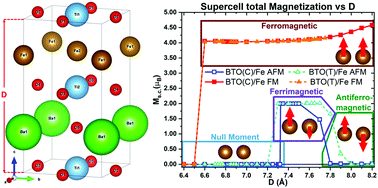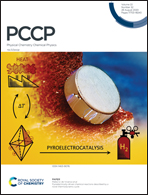Changing the magnetic states of an Fe/BaTiO3 interface through crystal field effects controlled by strain†
Abstract
The search for better and inexpensive magnetoelectric materials is now commonplace in solid state physics. Intense coupling between technologically viable electric and magnetic properties, embedded in a single material, is still an attribute greatly pursued by the scientific community. Following this line of thought, using DFT, the study of a specific interface between the TiO2 layer of BaTiO3 and a monolayer of Fe atoms is presented, probing different uni-axial strain effects of the considered supercell. Depending on the strain, several different metastable magnetic states are predicted: a perfectly balanced antiferromagnetic state, an unbalanced ferrimagnetic state, a ferromagnetic state, and a non-magnetic state where each atom has its total magnetic moment quenched. Since these multiple magnetic states can be reversibly controlled by strain, under optimized conditions, this interface can switch from the ferromagnetic state (μ ≈ 2.2 μB per Featom) to the non-magnetic state (μ = 0 μB per Featom), enabling enticing prospects for technological applications.



 Please wait while we load your content...
Please wait while we load your content...